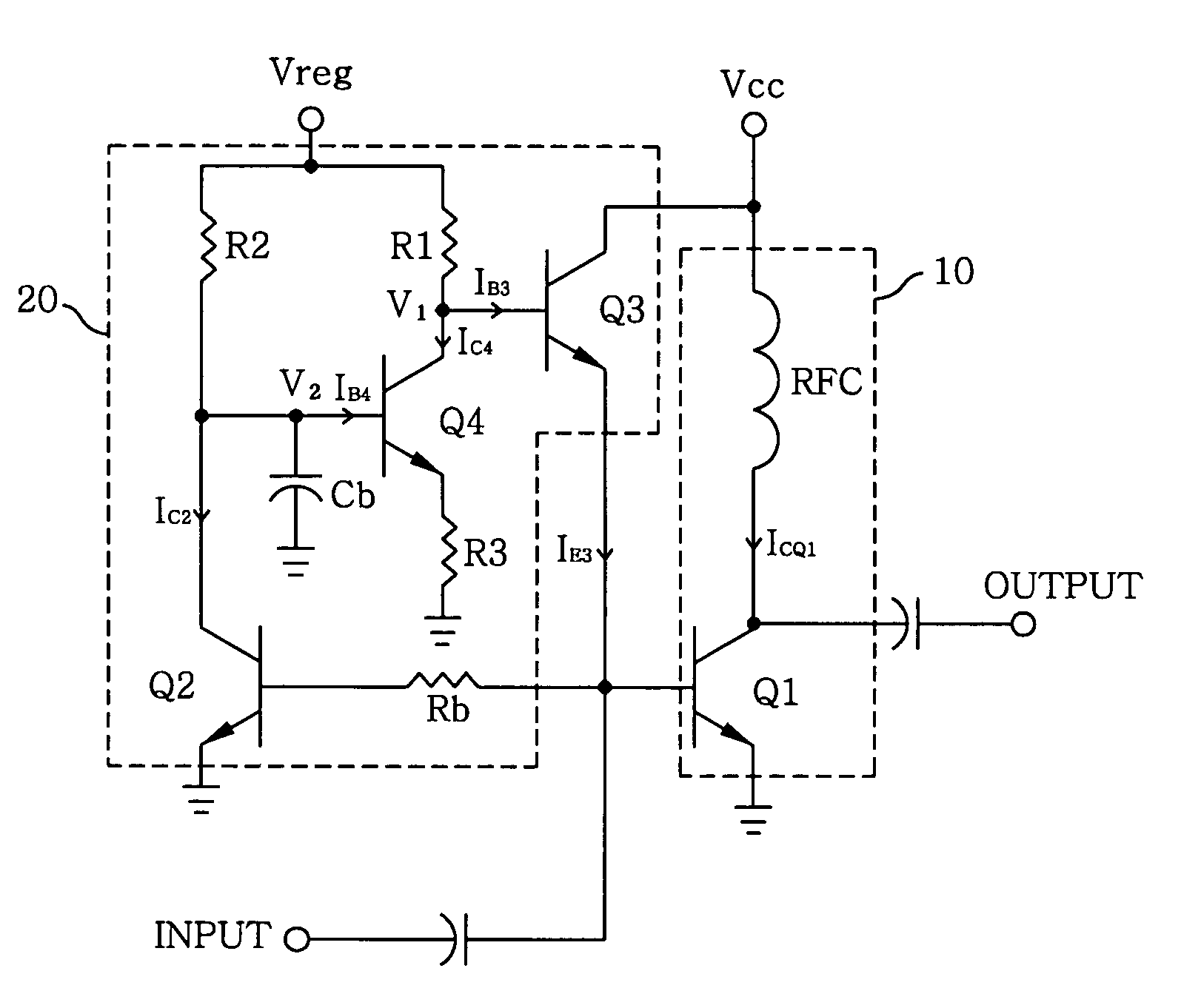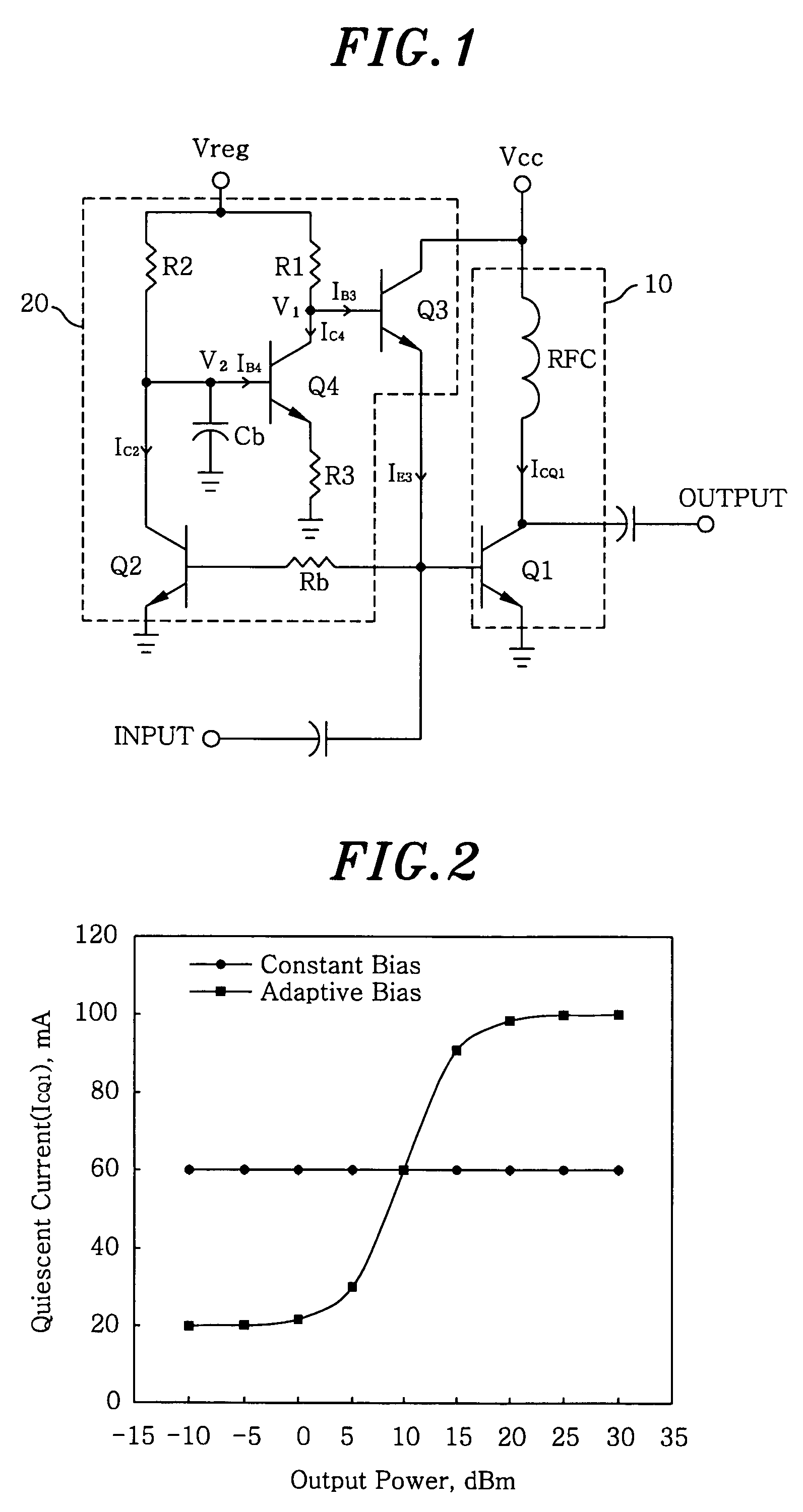Adaptive bias circuit for a power amplifier
a bias circuit and power amplifier technology, applied in the direction of amplifiers with semiconductor devices only, amplifiers with semiconductor devices/discharge tubes, gain control, etc., can solve the problems of difficult installation of components such as rf couplers/envelope detectors and dc-to-dc converters within, and the conventional power amplifier operates at a relatively low output. , to achieve the effect of effectively controlling dc power consumption, improving power added efficiency, and cost-effective and mini
- Summary
- Abstract
- Description
- Claims
- Application Information
AI Technical Summary
Benefits of technology
Problems solved by technology
Method used
Image
Examples
Embodiment Construction
[0013]Referring to FIG. 1, there is provided a power amplifier module including an adaptive bias circuit in accordance with a preferred embodiment of the present invention. The power amplifier module includes an RF (radio frequency) power amplifier 10 having a first transistor Q1 and an RF choke inductor RFC; and an adaptive bias circuit 20 having a second transistor Q2, a third transistor Q3, a fourth transistor Q4, a bypass capacitor Cb, a base resistor Rb, a first bias resistor R1, a second bias resistor R2 and an emitter resistor R3. An input terminal of the power amplifier module is connected to both the RF power amplifier 10 and the bias circuit 20. A DC source voltage supply Vcc is connected to both the RF power amplifier 10 and the bias circuit 20 and a regulated voltage supply Vreg is connected to the bias circuit 20.
[0014]Functioning as a class-AB power amplifier, the RF power amplifier 10 receives an input signal from the input terminal, and amplifies the input signal to ...
PUM
 Login to View More
Login to View More Abstract
Description
Claims
Application Information
 Login to View More
Login to View More - R&D
- Intellectual Property
- Life Sciences
- Materials
- Tech Scout
- Unparalleled Data Quality
- Higher Quality Content
- 60% Fewer Hallucinations
Browse by: Latest US Patents, China's latest patents, Technical Efficacy Thesaurus, Application Domain, Technology Topic, Popular Technical Reports.
© 2025 PatSnap. All rights reserved.Legal|Privacy policy|Modern Slavery Act Transparency Statement|Sitemap|About US| Contact US: help@patsnap.com


